Jewish India
At one time, there were 40,000 Jews in India. Today there are less than 4000, most having made aliyah to Israel in the 1950s after the establishment of the State of Israel and in the face of uncertainty about their fate in the newly independent state of India. On our recent trip to India, we visited synagogues in three principal areas – Mumbai (west coast of central India), Kolkata (east coast of central India) and Cochin (southern coast).
Jews first migrated to India during the Babylonian exile and are actually mentioned in Megillat Esther (which takes place in the 5th century BCE), which we just read for Purim.
So the king’s scribes were summoned at that time, on the twenty-third day of the third month, that is, the month of Sivan; and letters were written, at Mordecai’s dictation, to the Jews and to the satraps, the governors and the officials of the one hundred and twenty-seven provinces from India to Nubia: to every province in its own script and to every people in its own language, and to the Jews in their own script and language. (8:9)
——
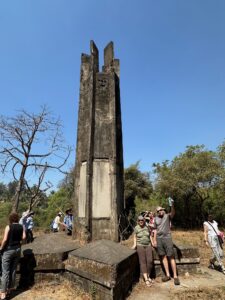
Most of the Jews currently living in India are members of the Bene Israel community. (This includes one of our guides, Joshua Shapurkar.) The Bene Israel first arrived in India during the 1st century CE, fleeing from Israel after the destruction of the second temple during the time of the Macabees. The community traces its roots back to seven couples who were shipwrecked at Nagaon, a small fishing village south of what is now Mumbai, and rescued (according to their tradition) by Elijah the prophet. Hence Elijah is revered, as shown by the triangular Elijah’s lamp (in addition to the eternal light) and the two Elijah’s chairs on either side of the ark that are used for rituals such as circumcision. They adopted much of the local lifestyle, food and clothing but lived separately and did not intermarry. They also maintained Jewish practices such as circumcision, reciting the Shema, and, most distinct from the local Hindu practices, observing Shabbat as a day of rest. The community migrated to Mumbai in the 1700s.

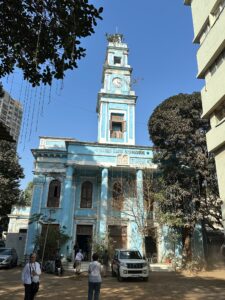
——
The Baghdadi Jewish community (which actually included Jews from Syria and other countries in the Middle East as well from Persia/Iraq) arrived in India between the 4th and 8th centuries CE. We visited several Baghdadi synagogues in Mumbai and Kolkata. The synagogues were much grander and less intimate than the Bene Israel synagogues, with clock towers, columns inside and out, and an huge alcove for the ark.
Today the Mogen David Synagogue in Mumbai is the only synagogue in India with a daily morning minyan, even though there only a few, if any, Baghdadi Jews remaining in Mumbai. This is due to an endowment from the Sassoon Foundation which not only maintains the building but provides a meal after the minyan. (Typical of Baghdadi synagogues, the synagogue is named after its founder – David Sassoon – and not, as perhaps you assumed, after King David.
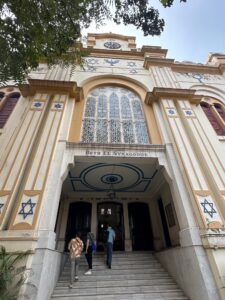 In Kolkata, there were two even more magnificent Baghdadi synagogues. Kalkotta is the birthplace of our other guide, Rahel Musleah, whose father was the last rabbi of the Beth El Synagogue. (Her family emigrated to the U.S. in the 1960s after most of the community made aliyah.) Although the synagogue is Orthodox, as are all of the synagogues in India, the community allows Rahel to lead Shabbat services when she comes with a group and for all of us – women and men – to sit together for the service.
In Kolkata, there were two even more magnificent Baghdadi synagogues. Kalkotta is the birthplace of our other guide, Rahel Musleah, whose father was the last rabbi of the Beth El Synagogue. (Her family emigrated to the U.S. in the 1960s after most of the community made aliyah.) Although the synagogue is Orthodox, as are all of the synagogues in India, the community allows Rahel to lead Shabbat services when she comes with a group and for all of us – women and men – to sit together for the service.


——
The Cochini or Malabari Jews, traders from the Malabar coast of the Kerala province, were the earliest Jewish community in India dating back to the 9th century BCE. The Chendamangalam Synagogue is the oldest synagogue in India, built in the 1100s. It is no longer in use but is now the Kerala Jews Lifestyle Museum, part of a larger heritage project by the provincial government to restore historically significant sites.
Malabari synagogues have several distinctive features. They were modeled after the Temple with an outer entryway and an inner area and with columns on either side of the arc. The door into the sanctuary is low, making it necessary to bow before you enter.
Most unusual is a second bima upstairs – this was not to bring the readers closer to the mechitzah (which is behind the upstairs bima) but was designed so that people receiving aliyot were literally called up to the Torah.
There was also a second group of Jews in Cochin, the Paradesi, meaning “ones from outside”. These were Jews who fled from Spain and Portugal. Their synagogues also have a second upstairs bima used on Shabbat and High Holy Days. The synagogue is still in use for Shabbat services every week, although the minyan is made up of visitors.
Sadly, the two communities did not get along but were segregated by skin color. The lighter-skinned Paradesi Jews (the ‘White Jews’) considered the darker-skinned Malabari Jews (‘Black Jews’) as impure, refusing to allow them to participate ritually and avoiding intermarriage.
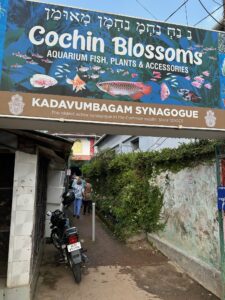 One of the most unusual synagogues we saw was a Malabari synagogue – the Kadavumbagam Synagogue – unusual because the outer courtyard of the synagogue is now a store selling aquarium fish and plants. The synagogue was abandoned in the 1950s, when the community emigrated en masse to Israel, and was then looted. It has been lovingly and single-handedly restored by one of the few remaining members of the community, Elias Josephai, whose father had been the Hazzan. The restoration was completed in 2018 and one of the Torah scrolls was returned to the synagogue. There are now occasional Shabbat services at the synagogue with a minyan made up mostly by visitors.
One of the most unusual synagogues we saw was a Malabari synagogue – the Kadavumbagam Synagogue – unusual because the outer courtyard of the synagogue is now a store selling aquarium fish and plants. The synagogue was abandoned in the 1950s, when the community emigrated en masse to Israel, and was then looted. It has been lovingly and single-handedly restored by one of the few remaining members of the community, Elias Josephai, whose father had been the Hazzan. The restoration was completed in 2018 and one of the Torah scrolls was returned to the synagogue. There are now occasional Shabbat services at the synagogue with a minyan made up mostly by visitors.
——
Today there are fewer than 4000 Jews living in India. Some of the people on our tour felt mournful about that, but I did not.
I thought back to how I’d felt in the Czech Republic as we went into beautifully restored synagogues in towns where there were no longer any Jews. There I had felt the presence of ghosts – of the people who had had no choice about leaving and who were forced out to their deaths.
The Jews of India had a choice. Yes, they left out of uncertainty about what would happen to them in the newly independent country of India. But they had a place to go and they went together, to form new communities in the newly established State of Israel. That, I think, is something to celebrate.


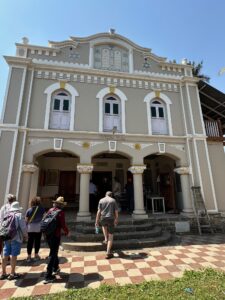
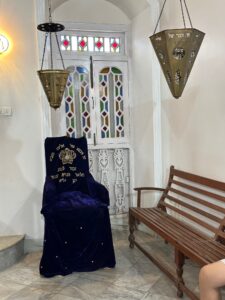
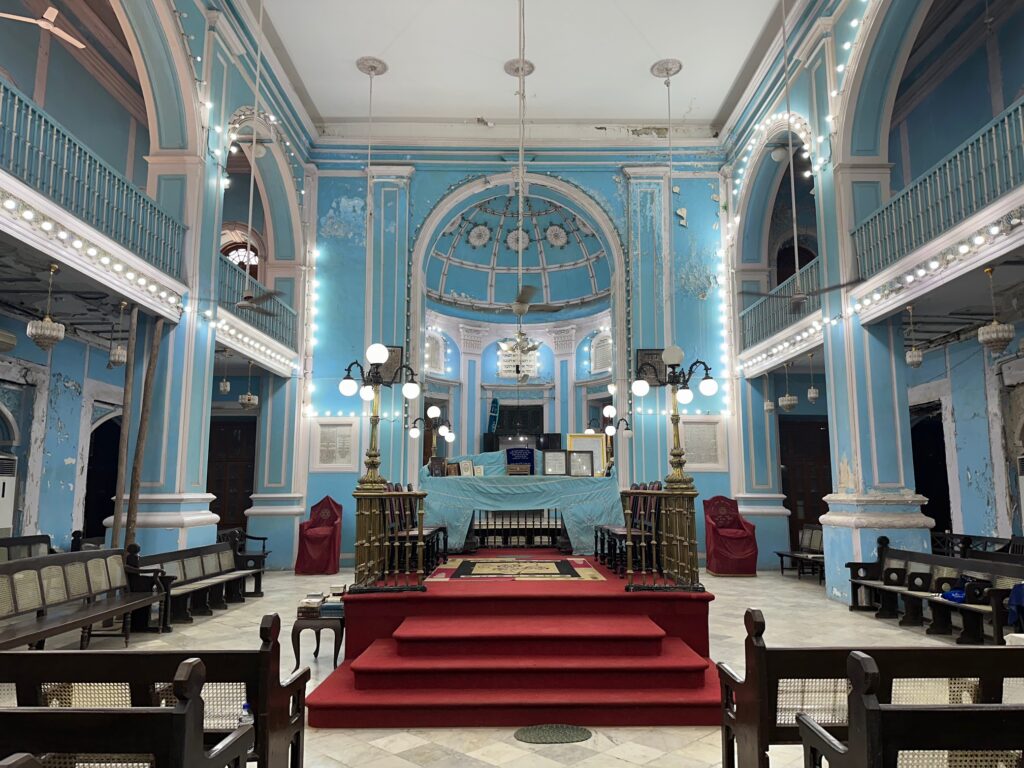
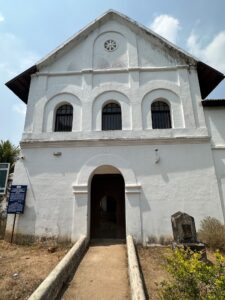
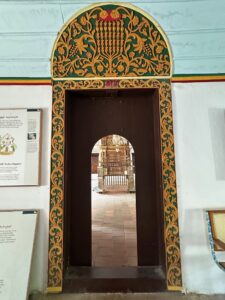
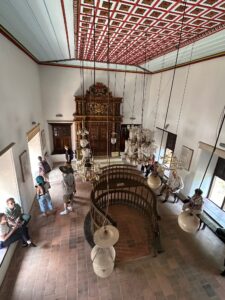
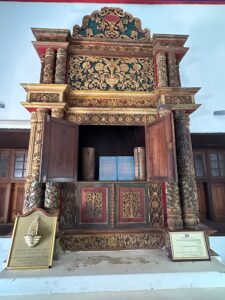


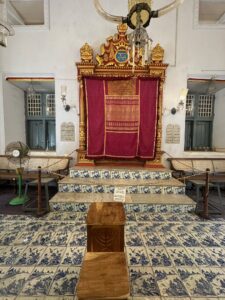
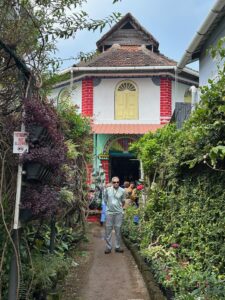



Very interesting article!